7
Mar
2024
Heel-Entry Shoes Designed for Your Child and You
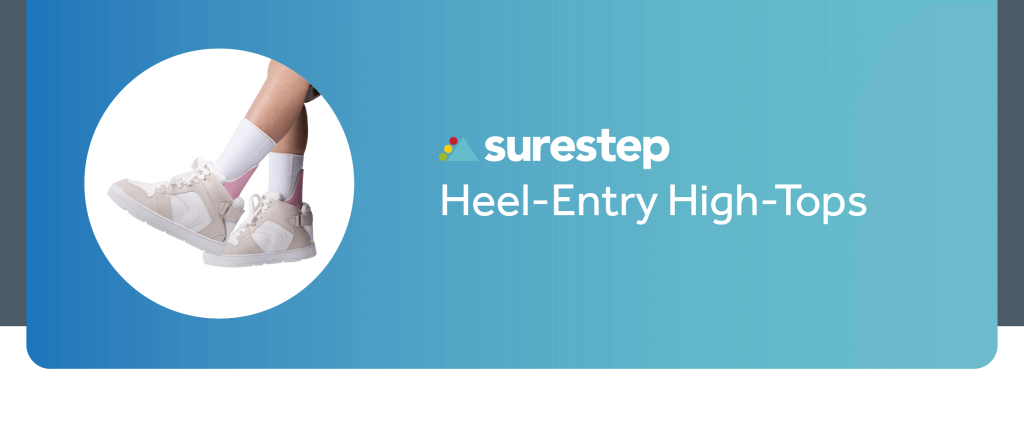
Janet* recently got a diagnosis for her two-year-old son Austin: hypotonia. She may have shed some tears. She didn’t want this for her son. On the doctor’s advice, she got SMOs for her son’s feet and ankles and started to feel hopeful.
But then she posted a picture of him on social media asking if anyone had gotten shoes for their own kids with SMOs. She got a flood of 80 comments, many of them with conflicting or unhelpful advice:
- “Buy {Brand A} shoes. They’re the best.”
- “No, buy {Brand B} shoes. They’re the only kind that work.”
- “Well, that brand is easy to use, but really {Brand C} is better.”
- “Don’t put shoes on over SMOs, or they won’t work.” (Totally wrong and unsafe advice.)
She was overwhelmed and didn’t actually know what to do. And when she went to the shoe store, the salesperson there didn’t know how to deal with SMOs.
They tried shoe after shoe after shoe, and none of them really fit right. Austin was emotional about the braces already and very squirmy.
So, she ended up picking out shoes that were two sizes too large to fit around the SMOs. Which looked ridiculous! Like clown shoes. Austin was clomping around in them, looking like he was going to trip over the shoes and fall.
She called this whole experience “a living hell.” She was already emotional about dealing with a toddler who has hypotonia, which she had never heard of before—a new definition of her son.
And now the SMO didn’t have shoes that would easily fit over them. So, Janet was starting to worry that they were only half of a solution…and the shoes were a mysterious second half.
* Name and some details changed for privacy.
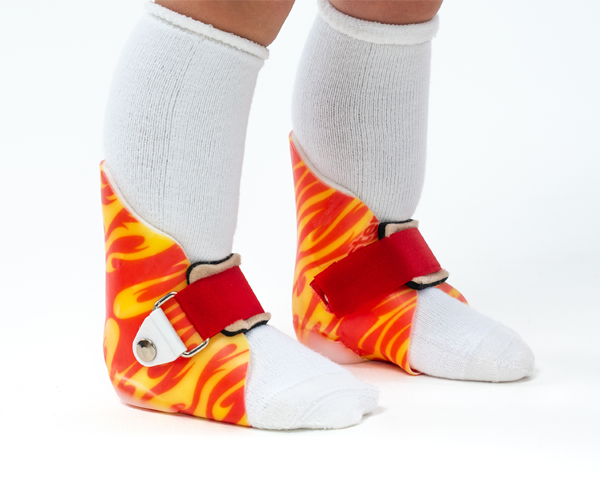
Why Don’t Store-Bought Shoes Work Right?
This is exactly why we designed Surestep shoes for SMOs and AFOs. We wanted to help people like Janet avoid some of the problems that average store-bought shoes come with:
1. Heel Collapse: As you put an SMO or AFO into a shoe, the brace accidentally stomps down on the heel of the shoe, crushing it. Then, the crushed heel sticks out awkwardly and is permanently harder to use in the future.
2. Trouble Closing: Laces or velcro straps don’t quite fit around the top of the foot anymore when a brace is added.
3. Being Too Large: You have to buy shoes that are one or two sizes too large in order to make room for braces. The shoes are an inch too long for kiddos, which gives them more trouble walking! (And they look ridiculous.)
4. Wearing Out Too Fast: The wear pattern on the bottom of the shoe is unusual because the shoes are too long. They wear out in only four or five months.
5. Longer Time Getting Ready in the Morning: Putting on shoes can turn from a five-minute routine to 10–20 minutes. That’s because shoes that are long enough often are not wide enough for braces. It takes a lot more wiggling to get them on.
Now, there are ways to buy shoes from other brands that work pretty well. We explain more in our shoe-buying guide blog post.
But if you have the means to save yourself some time and hassle, we recently came out with a new type of shoe. One mom gave us this feedback on social media:
“Best adaptive shoes EVER! We usually have to repurchase new adaptive shoes every 3-4 months because they break down thanks to the AFOs rubbing on the inside. We received these at the beginning of November and they still look BRAND NEW inside and out!” ~Amanda (shopaholic_and_babies)
Introducing Heel-Entry High-Tops at Our One-Stop Shop
You can skip the challenges we mentioned above. How? By getting shoes specifically designed for braces. They help unlock all that braces can do.
And you don’t have to go to different shoe stores and buy five different sizes. You don’t have to sort through available shoes and hope the right brand-size combination is available.
You don’t have to deal with conflicting advice from store employees, friends, and family who are not experts on your needs.
And you don’t have to wonder afterwards if you bought the best shoes—the safest and most effective for your kiddo’s diagnosis. No second-guessing! And a satisfaction guarantee.
That’s why we designed Surestep heel-entry high-tops. We wanted to save you time and stress, along with making your kiddo safer. They include:
- A heel that opens to make putting them on easy, and it’s easy to close with Velcro.
- A simple, classic color scheme that goes with any outfit. They look like normal shoes!
- A wide design in the heel, instep, and toe box to easily fit over braces.
- Sturdier materials in the sole and the upper (the main body of the shoe).
- Two removable insoles so you can adjust the fit until it’s just right for your kiddo.
- Fewer shoelace holes, which makes adjusting laces easier.
- Customizable soles.
All Surestep shoes have cut lines in the soles so that your orthotist can adjust the sole. With certain braces and needs, a sole modification can really help your kiddo stand, walk, and play.
Your orthotist can also measure your child’s feet in braces at the office to tell you what size of shoes you need. Or you can print out and use our sizing chart to find out the size yourself.
Time-Saving, Convenient Shoes Made Just for Your Busy Life
Imagine these two scenarios with (1) shoes that are not designed for braces and (2) shoes that are designed for SMOs and AFOs:
1. Typical Off-the-Shelf Shoes
Your squirming toddler is trying to hold still while you unlace shoes that are way too large for him. You ram the foot and SMO into the shoes several times, and the heel and sides of the shoe get scrunched, making them even harder to use in the future.
Your kiddo is already frustrated with having to wear this bulky device and any extra frustration threatens to set him off. Shoes that take a long time to put on, are too large, and are easy to damage in the process? Bad news.
2. Shoes Made for SMOs and AFOs
With your child’s SMOs on, you pop open the back of her heel-entry shoes and slide the shoes over the SMOs. You close the heel and pull a Velcro strap tight.
Then, you check the laces, which you’ve already put at the right tightness before. They seem good. You just adjust them slightly (no need to tie them again), and your daughter is ready to go.
Alternatively, your kiddo is a little older, and she gets to enjoy mastering the skill of putting heel-entry shoes on herself!
This is awesome for a kiddo who struggles with fine motor skills. It lets her experience more independence. For example, imagine she has to take her shoes off while changing for P.E. class. It’s OK, because she knows how to put them back on by working the heel-entry straps.
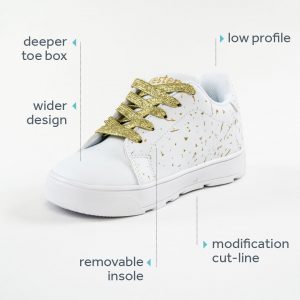
Order the Shoes That Are Right for Your Kiddo and Budget
Not every mom or dad wants to buy the shoe with the latest bells and whistles. That’s why we recommend brands for different budgets in our shoe-buying guide blog post.
Plus, you can try different styles of Surestep shoes that might make more sense for you. Check out this chart:
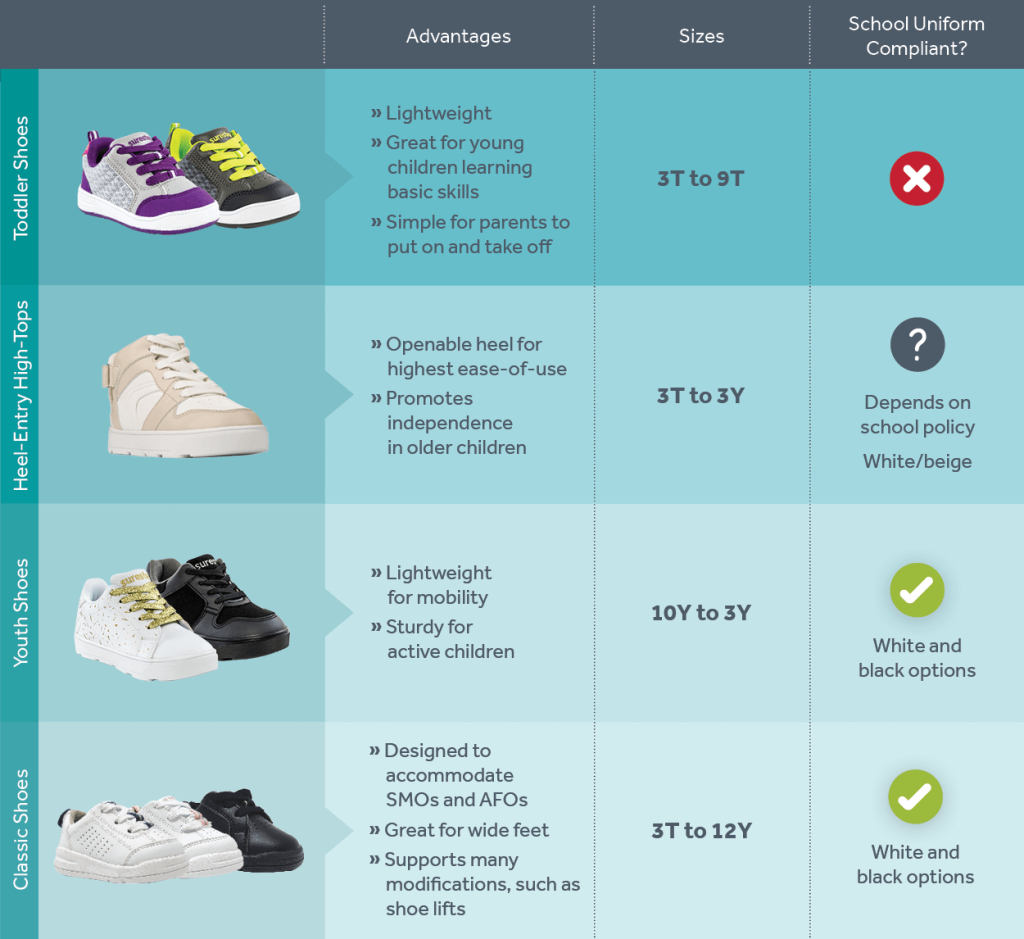
Parents have been using our Classic, Toddler, and Youth lines for several years now. Our heel-entry shoes have only been out a few months, but some feedback we’ve heard includes these from clinicians:
“I have a little one who has these and they’re great!” ~Karyn (wrightstuffpt)
“I love these. So many of my clients have them!!” ~Jackie (jackiepetuya)
“I LOVE the heel entry high top! I’ve used them twice so far and I have ordered 2 more at the request of the PTs. They are so easy to use and so far durable for long term use!” ~Brezee Sehrer (Facebook)
The right shoes for your kiddo will come down to your budget, the amount of time you have, your child’s age, and how much time you can dedicate to shopping. So, we recommend visiting the Surestep shoes page and checking out the Surestep shop.
Here’s another way to deal with budget: make heel-entry shoes a “grandparent gift!” Relatives might want to help, but they don’t know how. Now, they can visit the Surestep shop, order the right size online, and send them to your home.
Any Questions or Feedback About Surestep Shoes?
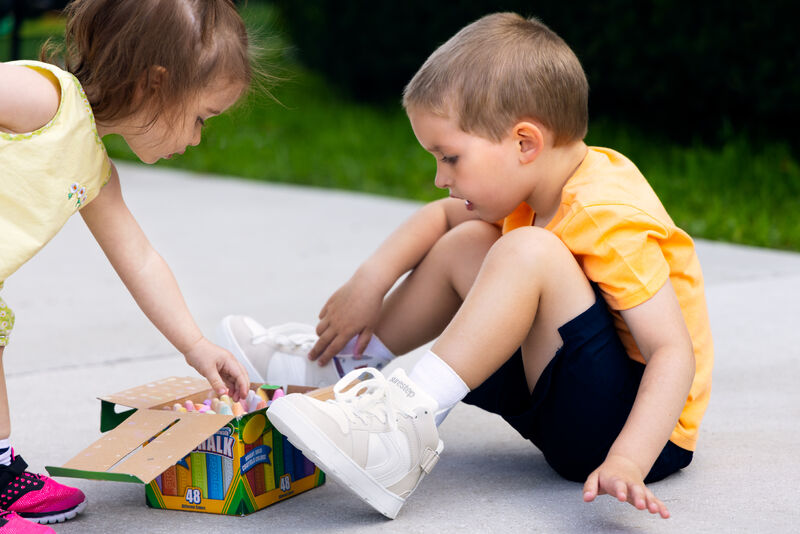
If you have any questions about this new shoe, our other types of shoes, or any other shoe-buying issues, let us know on Facebook or Instagram. Or share whatever other AFO or SMO shoes you’ve tried. That could really help other parents like you! You’re part of a supportive community, so let’s keep in touch.
Shoes for SMOs and AFOs